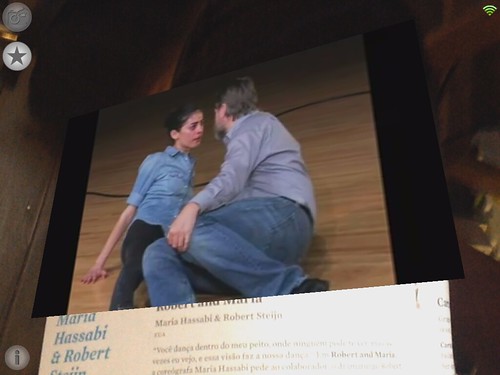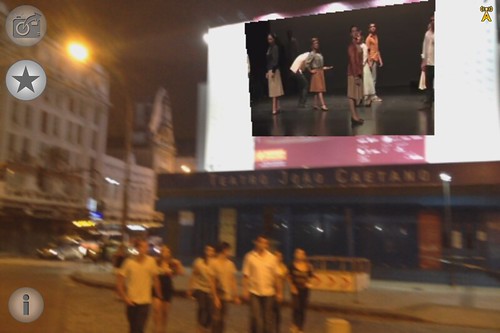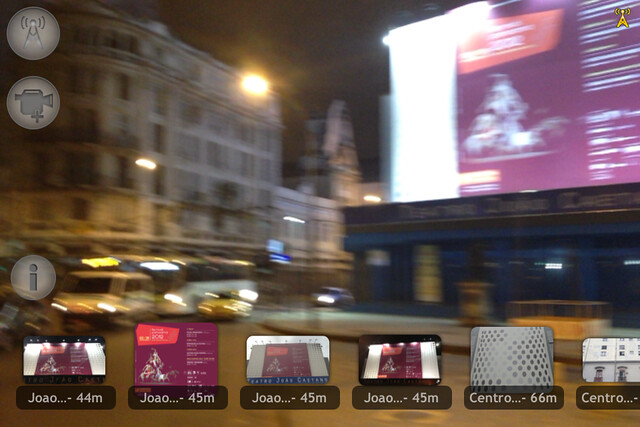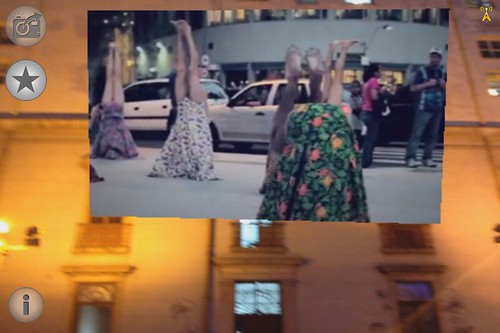mòdulmap #1 - noviembre en lacaldera del 5 al 30 de noviembre de 2012
diariamente de 09.30 a 15.00
opción 1 - mes completo
opción 2 - por semanas
* precios y descuentos al final de la página Programa:
del 5 al 9 de noviembre
Salva Sanchis
Trabajo técnico (y) de improvisación
de 09.30 a 15.00
En este taller trabajaremos la improvisación como elemento igual de concreto y específico como en cualquier otro tipo de vocabulario. A partir de principios técnicos basados en la integración funcional de todas las partes del cuerpo, intentaremos ver como es posible romper la división entre cuerpo y mente a través del movimiento.
Salva Sanchis reside y trabaja en Bélgica, donde dirige su propia compañía. A parte de su trabajo coreográfico, con unas 17 producciones en los últimos 15 años, que incluyen colaboraciones con Anne Teresa de Keersmaeker, Salva Sanchis trabaja como profesor y coordinador de estudios en la escuela internacional P.A.R.T.S. 
del 12 al 16 de noviembre
Isabel López
Entreno
de 09.30 a 11.00
Isabel López estudia en el Conservatorio Profesional de Danza de Murcia, en Madrid, en el Centre Chorégraphique National de Montpellier y en Barcelona. Siempre vinculada a la creación, ha trabajado en diferentes proyectos y compañías de danza. Desde el 2000 trabaja con Àngels Margarit / cia. Mudances. Asistente de coreografía de Àngels Margarit para la Compañía Nacional de Danza y en diversos trabajos de la coreógrafa. En 2007 crea con Gustavo Lesgart Travelin y en 2010 el solo Bailada para el Festival Mudanzas de Cartagena. 
del 12 al 16 de noviembre
Núria Font
Herramientas audiovisuales para la danza:
videodanza, proceso de creación, documentación
de 11.30 a 15.00
Recorrido por la creación de danza en el espacio audiovisual - Desde los inicios del cine a la videodanza más reciente. Práctica de utilización de las herramientas audiovisuales - cámara y edición. Documentar la danza a través de les imágenes en movimiento. Práctica de creación - grabación, edición y postproducción - formatos digitales de reproducción.
Núria Font es realizadora audiovisual especializada en danza y artes escénicas y activista cultural. Dirige la asociación Nu2's -www.nu2s.org- desde la que produce y organiza actividades alrededor de la danza, la imágen y los nuevos medios. Colabora habitualment con Àngels Margarit/cia. Mudances en la creación de videodanza y de proyecciones para sus espectáculos; con la compañía Mal Pelo en la documentación visual de sus proyectos y en intervenciones en las exposiciones, entre otras. Ha colaborado en la dirección de los programas de televisión Metrópolis, de La 2, y Terriroris Dansa, de Canal 33. Imparte clases de Danza y Tecnología en el Institut del Teatre de Barcelona y talleres de videodanza por todo el mundo. 
del 19 al 23 de noviembre
Àngels Margarit
Entreno, partituras y materiales Mudances para Tèrbola
de 09.30 a 15.00
Este curso es una aproximación al lenguaje, repertorio y herramientas de composición que Àngels Margarit ha elaborado a través de las diferentes creaciones para la compañía MUDANCES. Se centra en las partituras y materiales de Tèrbola, una creación que trabaja alrededor de la idea del aire i el agua, un trabajo de texturas, espacio, y una exploración específica en la composición de tríos en interacción trabajando los soportes, el peso, el impulso, la suspensión y el desplazamiento.
Àngels Margarit se dedica a la danza en las diferentes vertientes de bailarina, pedagoga y coreógrafa desde finals de los 70. Prácticamente desde el principio, y paralelamente a la actividad creativa, Àngels Margarit desarrolla una actividad pedagógica enfocada al sector de la danza.
Se asocia con otros coreógrafos para abrir Bugé (1984), centro de actividades de danza -que ha sido centro de formación para muchos de los profesionales actuales- con la intenció de poder disponer de espacios de ensayo y también para poder llevar a cabo un trabajo de pedagogía y formación. Desde entonces ha mantenido la activat creativa y pedagógica con una programación internacional amplia y variada.
Imparte regularmente cursos, talleres y repertorio en escuelas y formaciones oficiales de España, Francia, Alemania, Finlandia, Canadá, Colombia, Venezuela, Costa Rica, Dinamarca, etc. Colabora en diferentes programas pedagógicos para el Centro Coreográfico Galego; participa en la elaboración del plan de Estudios Superiores para el Espacio Común Europeu; dirige el Conservatori Superior de Dansa (CSD) del Institut del Teatre de Barcelona, durante 2006/07; colabora con la Skolen for moderne Dans de Copenhagen (Dinamarca). Actualmente imparte clases de composición para el 3er. curso del grado superior del CSD - Institut del Teatre. 
del 26 al 30 de noviembre
África Navarro
Técnica de contact como herramienta de improvisación.
de 09.30 a 12.00
No tener miedo a probar, a usar esos otros cuerpos porque sabemos que van a estar ahí bailando, comunicándose, hablando el mismo lenguaje, encontrando patrones que reconocemos y que los podemos usar...
Primero prepararemos al cuerpo físicamente para bailar. Luego, le haremos pensar. Haremos todo un recorrido por la parte más técnica del contact y, así, sentar las bases comunes de la comunicación. Para, al final, desarrollar improvisaciones con unos temas físicos sobre los que bailar.
África Navarro Desde 1983, estudia danza clásica y contemporánea en València. En 1992 empieza a estudiar improvisación y contact-improvisación, se traslada a Barcelona y trabaja con diferentes compañías com Mudances, Mal Pelo y Malqueridas, entre otras. A partir de 2001 hasta hoy, y paralelamente al trabajo de compañía, desarrolla su propio trabajo de creación e improvisación, como intérprete-bailarina y como coreógrafa, en proyectos como Felicidad.es con David Espinosa, el proyecto de opera a secundaria del Liceu de Barcelona, o el espectáculoAcaba't la sopa para la Fundació La Caixa. Como profesora empieza en 1989 con clases de contemporáneo y, a partir del 2000, se especializa en improvisación y contact-improvisación. Da cursos regulares e intensivos en diversas escuelas de toda España y Europa. 
del 26 al 28 de noviembre
Roser López Espinosa
Taller: El cuerpo y la imaginación
de 12.30 a 15.00
El cuerpo imagina y se transforma. El cuerpo está lleno de paisajes. En el taller pondremos en práctica tareas y estrategias a partir de ideas como la limitación y la imaginación, el cuerpo articulado, suave y a la vez potente; el trabajo de pareja y de grupo; las espirales, las salidas fuera de eje y la velocidad; los motivos y la variación, el detalle y el juego.
Roser López Espinosa es graduada en Danza Contemporánea por la MTD / Escuela Superior de Arts de Amsterdam (Holanda). En 2005 recibe la beca danceWEB de Viena y sigue entrenos con el exentrenador olímpico de gimasia Jaume Miró. Baila en Holanda con Magpie Music Dance Company de Katie Duck, Marta Reig Torres y Pere Faura. En Barcelona colabora especialmente con Àngels Margarit / Cia Mudances, i también con Cesc Gelabert e Isaki Lacuesta, Iago Pericot o Las Malqueridas, entre otros. Desde 2006 crea piezas propias (The lizard’s skin, Còncau II, Miniatura...) que han recibido el reconocimiento internacional con varios premios y se han visto en Europa, Egipto, Canadá y Japón. En la primavera de 2013 estrenará Lowland en el Mercat de les Flors. www.roserlopez.com 
el 29 de noviembre
Inés Boza - Senza tempo
Videoarchivo – repertorio
Dos procesos de creación: desde los sueños hasta el público
de 12.30 a 15.00
Análisis de repertorio y procéso creativo a partir de la visualización de vídeos de la obra de manos de sus creadores, contextualizándola en el moment histórico en que se creó.
Inicio: sueños, ideas, documentación, escritura del guión.
Ensayos y periodo de creación colectiva.
Presentación al público y transformación de la pieza.
Inés Boza - Senza tempo El proyecto escénico SzaTPo que actualmente dirige Inés Boza, nació en los 90 en Barcelona de la mano de Inés Boza y Carles Mallol y ha sido pionero en Cataluña de lo que se ha llamado danza-teatro y en la creación y adaptación de espectáculos de danza para espacios públicos. Sus espectáculos visuales, poéticos y con narrativas no convencionales, juegan con la danza, el teatro, las imágenes proyectadas y las palabras. A lo largo de sus veinte años de trayectoria ha desarrollado un lenguaje propio que combina la proximidad con el públic con la innovación, el riesgo y la investigación constante de nuevas maneras y formatos. Sus propuestas escénicas van en dos linias, la de espectáculos para teatros y salas y la de espectáculos para espacios públicos. SenZa TemPo es residente y socio fundador del Centre de Creació de Dansa i Arts Escèniques Contemporànies, La Caldera (Barcelona), Premi Nacional de Dansa de Catalunya (2006). 
el 30 de noviembre
Carles Salas
Videoarchivo – repertorio
Paisajes de la intimidad
de 12.30 a 15.00
Recorrido de la metodología y filosofía en las creaciones de las tres Julius i Florette que pertenecen a mi mundo más íntimo y que se convierten en el final de mi carrera como intérprete para convertirse inesperadamente en una nueva manera de crear y de estar en el escenario. Una manera diferente de entender la creación y también la danza y de comunicarse con el público.
Carles Salas Titulado por el Institut del Teatre en danza contemporánea. Bailarín de las cías: L’Anònima Imperial, Metros, Cia. Avelina Argüelles, Tanzforum de Colònia. Fundador de la cia. Búbulus con la que ha creado más de 22 espectáculos. Profesor del Institut del Teatre y de la Universitat Autònoma de Barcelona. También ha impartido cursos de técnica y de composición en Cataluña, España, Portugal, Francia, Italia, Alemania, Polonia, EEUU, Argentina y Brasil.

Precios
del 5 al 30 de noviembre - 550,00 €
del 05 al 09 de noviembre - 190,00 €
del 12 al 16 de noviembre - 170,00 €
del 19 al 23 de noviembre - 170,00 €
del 26 al 30 de noviembre - 170,00 €
* descuentos del 10 % para los asociados a asociaciones profesionales de danza |




